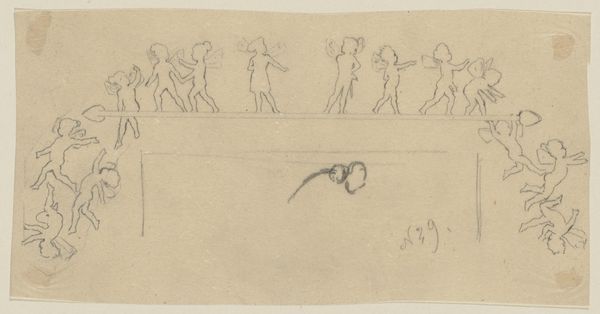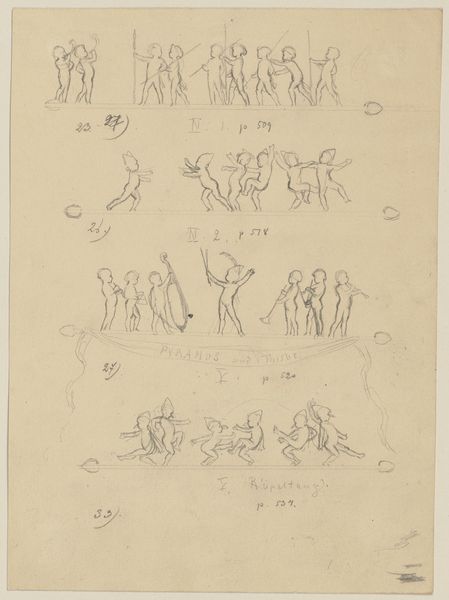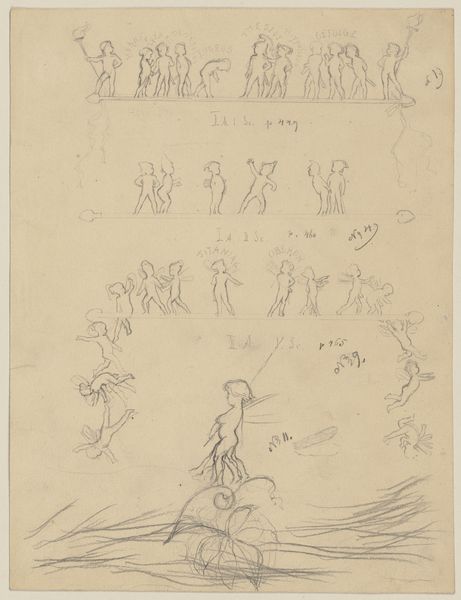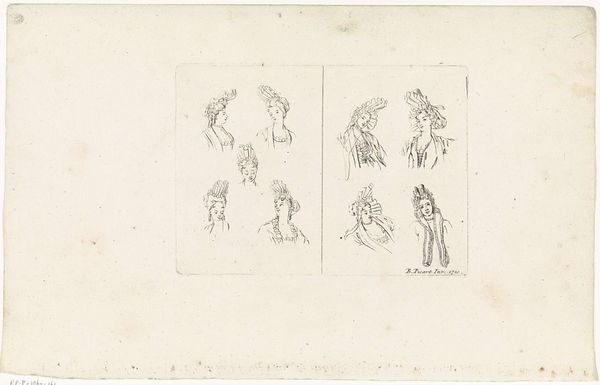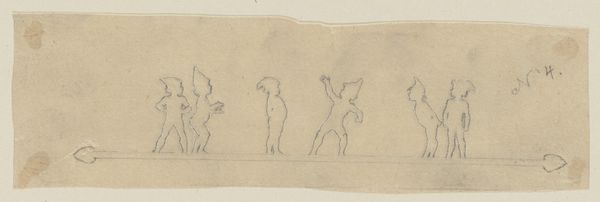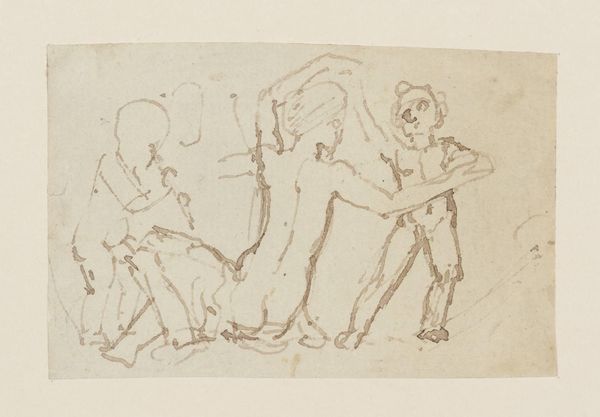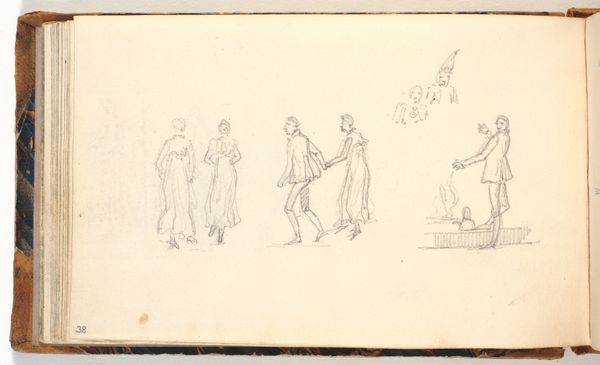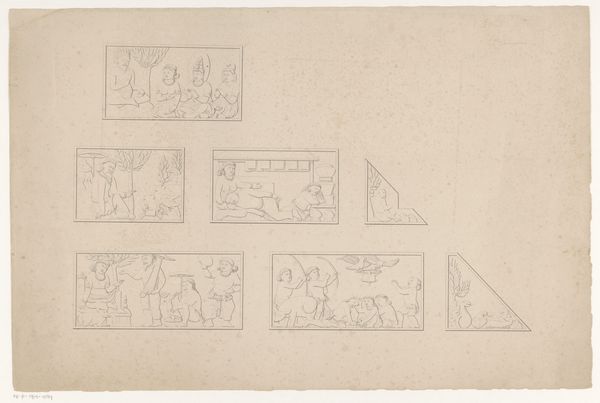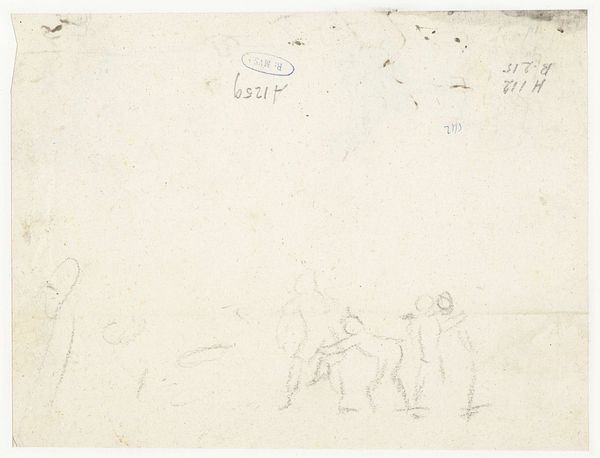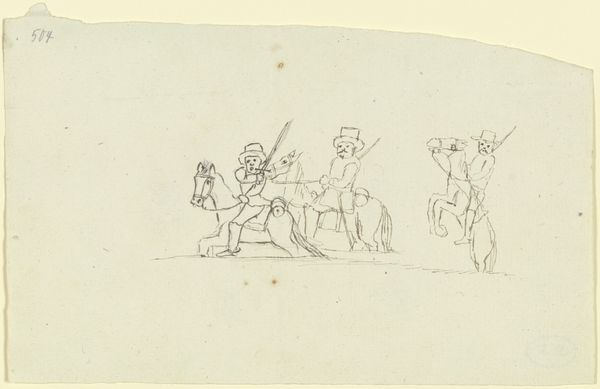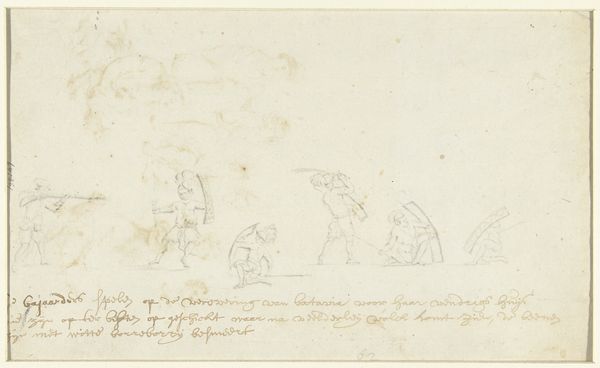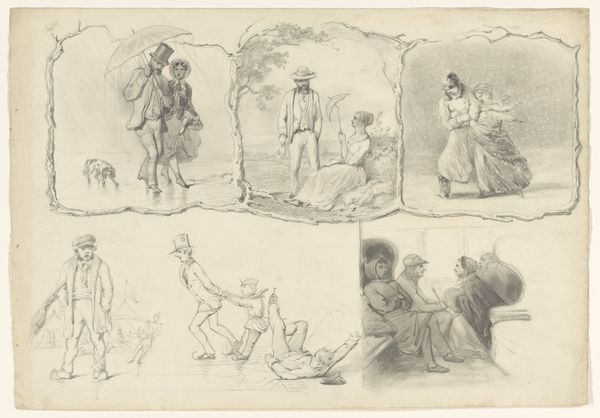
Studienblatt_ Figuren aus Shakespeares Sommernachtstraum c. 1867 - 1868
0:00
0:00
Copyright: Public Domain
Editor: This pencil drawing, "Studienblatt: Figuren aus Shakespeares Sommernachtstraum," was created by Paul Konewka around 1867-1868. I'm immediately struck by how sketch-like it is, almost like a preparatory page from a sketchbook. What can you tell us about its context within 19th-century art and culture? Curator: Well, given Konewka's subject, Shakespeare's "A Midsummer Night's Dream," we're immediately drawn into a web of 19th-century interests. The play enjoyed immense popularity at the time, signifying a Romantic fascination with folklore and the irrational. The figures are loosely drawn, like silhouettes; how might that aesthetic choice align with, or push back against, the artistic establishment? Editor: That's a great point. The rough sketches feel quite different from the highly polished history paintings that were popular at the Academy. It's as if he's capturing fleeting moments of fantasy. Were these sketches meant for public consumption, or were they mainly personal explorations? Curator: The question of access and audience is key. Konewka produced these drawings as part of his larger body of silhouette illustrations. By producing relatively inexpensive and widely accessible prints, Konewka helped democratize art, bringing scenes from high culture, such as Shakespeare, to a broader public. So, in a sense, they were certainly *intended* for public viewing. Can we consider the historical implication of making fine art accessible in this way? Editor: That's fascinating. So it's not just about representing a romantic play but about broadening access to art and literature for the masses. It’s a radical statement by using widely available material for making the illustration in his own vision. Thanks so much for giving a fresh vision towards this drawing. Curator: Absolutely, it reframes how we perceive art’s purpose. Instead of just beauty, art as a medium for dissemination, dialogue, and perhaps even, subtle social commentary. This changed my understanding of this work.
Comments
No comments
Be the first to comment and join the conversation on the ultimate creative platform.
